wrestling / Columns
Going Broadway 04.17.12 From Jackie To Jerry: The Passing of The Memphis Crown
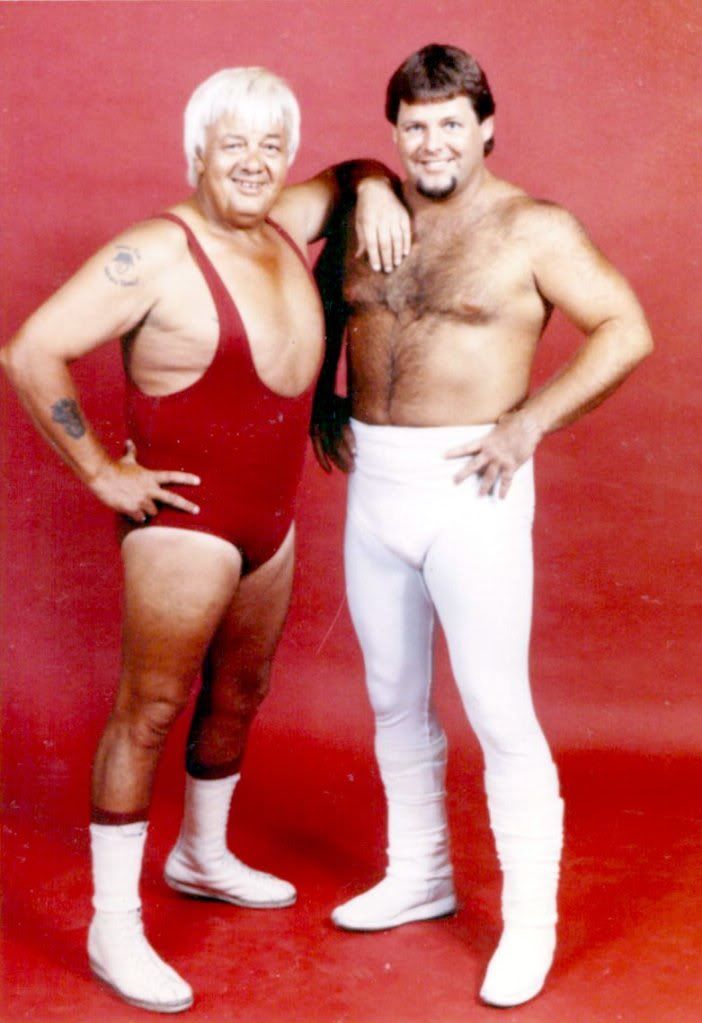
By 1974, a new generation of wrestlers were beginning to take the Memphis territory over and carry on the legacy of previous giants such as Sputnik Monroe and Billy Wicks. With the television broadcast becoming a bigger tool in showcasing the talents of this next generation to more and more fans in the region, so did the action and the feuds become equally hotter and larger. The perfect recipe and the perfect storm for a young artist/disc jockey turned wrester to emerge as not only the next face of the Memphis wrestling promotion but also as a nationally recognized star in the business.
Jerry Lawler’s origins and career have been lauded and praised by many over the years, and up to the point of 1974 he was on the verge, on the edge of becoming “the guy” in Memphis wrestling. Already a former NWA Southern Tag Team Champion with Sam Bass and NWA Junior Heavyweight champion, Lawler still needed something big to get him over completely with the Memphis fans.
Still circulating and working the territory was long time Memphis legend Jackie Fargo, who was not only known as “The Fabulous One” but also “The King” of Memphis wrestling. Having won well over twenty tag team championships, Fargo was also as renowned as a singles competitor both as a face and heel. Despite being in semi-retirement by the late 60’s, promoter Jerry Jarrett coxed him out of retirement to bring fans back to the arenas.
And back to the arenas they came. During the summer of 1974, Fargo would challenge Lawler for his NWA Southern Junior Heavyweight Championship in a match were not only eras collided but also when a pupil challenged his mentor.
…
Jackie Fargo (born Henry Faggart) debuted as a professional wrestler in 1955 at the age of 27. Fargo was first introduced to professional wrestling by an offer from a promoter that enjoyed his work as an amateur athlete. Fargo accepted the offer for $100 a week to work for the promoter and eventually was asked to work down in Florida for an increased sum. It was in Florida that his first wrestling nickname was bestowed upon him in the form of “Honey Boy” Fargo. 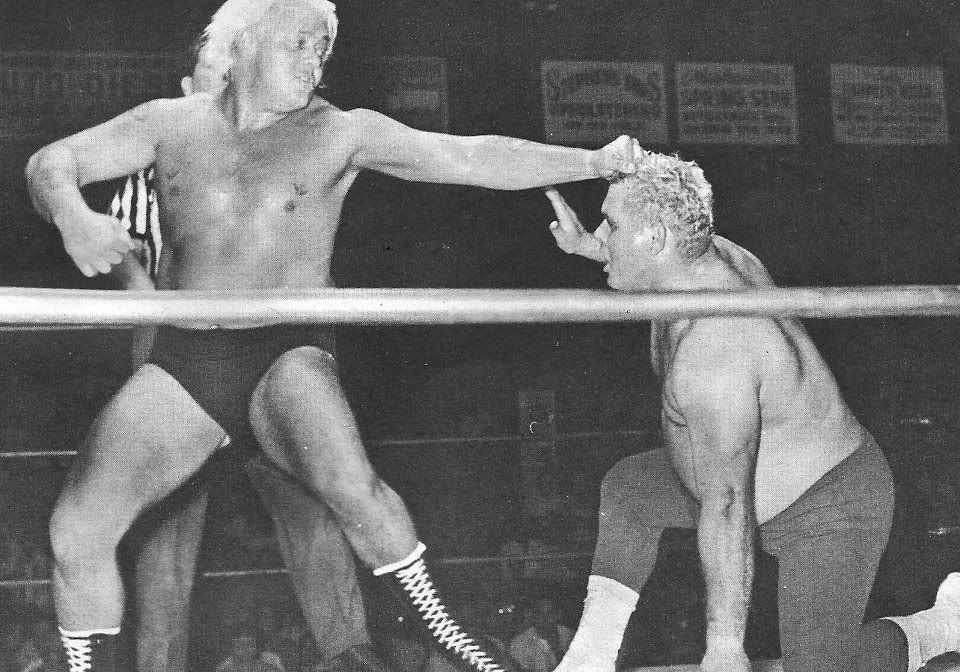
Fargo’s flowing bleach blonde locks and deep southern drawl didn’t hurt his new “Honey Boy” image. In fact it didn’t hurt at all when he was picked to work matches for a five week span in Cuba, which during the 1950’s was like going to beautiful resort. But unfortunately a draft notice from the US Government kept Fargo from making the trip and by the time his stint in the army was complete, Cuba was under the Castro regime and thus any kind of entrance into Cuba was forbidden.
But his run during the 1950’s with his brother Don Fargo yielded great success for both as they would travel up north and sell out Madison Square Garden against Argentina Rocca and Miguel Perez. Dubbed “The Fabulous Fargos,” the duo would become a mainstay on the tag team wrestling scene in multiple regions of the country throughout the 1950’s as notorious heels.
The height of their arrogance as a wrestling tag team gave birth to the infamous “Fargo strut” which became a staple of Jackie throughout his wrestling career. It would start with an opponent working on Fargo through a series of moves, and then Irish-whipping him into the ropes. But instead of coming off of the ropes and into a clothesline or back body drop, Fargo would slow down and divert into a boastful strut, which would incite not only the crowd but get under the skin of his opponent as blatantly disrespectful.
(Wrestling fans can find many examples of others taking on the famous “Fargo Strut” as their own throughout the years, which has never bothered Fargo. “Often imitated, never duplicated,” as he famously says.)
By the 1960’s, Jackie would move into the singles ranks, which would take his popularity to another level. Settling down in the Memphis region, he continued on as a heel but quickly shifted into becoming a beloved face to the Memphis fans. Steve Johnson, co-author of both The Pro Wrestling Hall of Fame: The Tag Teams as well as The Pro Wrestling Hall of Fame: The Heels, points to Fargo as being “one of the first true villains in the squared circle to switch to good guy status, on route to becoming the biggest name int he wild-and-wooly history of Tennessee grappling.”
Back in 2009, Jim Cornette wrote a lengthy and well-written critical analysis of the evolution (or maybe de-evolution) of hardcore wrestling were he points back to Fargo as being one of the forerunners of the “anything goes” style.
“Wild, bloody, chair and table-swinging brawls were Jackie’s forte, and any type of No DQ, anything-goes matches where furniture and ring bells ended up in the ring were often called ‘Fargo Matches’ by those in the business in the area…. Fargo often did ‘hardways’ (taking full-force punches and being busted open for real) to protect the credibility of wrestling.” – Jim Cornette, “The Slippery Slope of Hardcore Wrestling 05-20-09” (full article available here)
Despite working for the notoriously underpaying Nick Gulas, who ran the Tennessee territory for years, Fargo was the biggest draw, and arguably stayed in that role for fifteen years until he stepped away into semi-retirement. But it was during the later stages of his golden era run that Fargo began to transition to the role of mentor to younger talent that was up and coming in Memphis.
Jerry Lawler would be one of these younger talents to gravitate towards Fargo.
Actually, Fargo first became enthralled with the young Jerry Lawler, initially, because of his incredible artistic skills. Lawler had been submitting his drawings to Lance Russell, the commentator for the weekly wrestling show, since he was boy first going to the matches. Now much older, Fargo began to employ Lawler as a painter for his sign company that he worked on the side.
But Lawler’s true curiosity and passion would grow towards being in the squared circle like his mentor Fargo. In his biography It’s Good To Be Kind…Sometimes Lawler notes his hesitancy to approach Fargo about training with him. “Jackie says now that he knew I was bursting to ask him about wrestling, and he was waiting for me to make the first move.”
HIs first foray into the wrestling world came when he played a trump card on booker Aubrey Grifftih, who worked wrestling shows in Arkansas. Griffith, hesitant to put Lawler on a card with no wrestling experience, had his mind changed with Lawler revealed he was a radio disc jockey for KWAM-990 in Memphis and could provide cheap publicity for his show.
The documentary Memphis Heat: The True Story of Memphis Wrasslin’ has Lawler talk in depth about that first show and how all he really wanted to do was take a bump to the outside like his favorite wrestling tag team, The Blue Infernos, would work with their opponents…. Except when Lawler went flying to the outside, he was knocked out for fifteen minutes.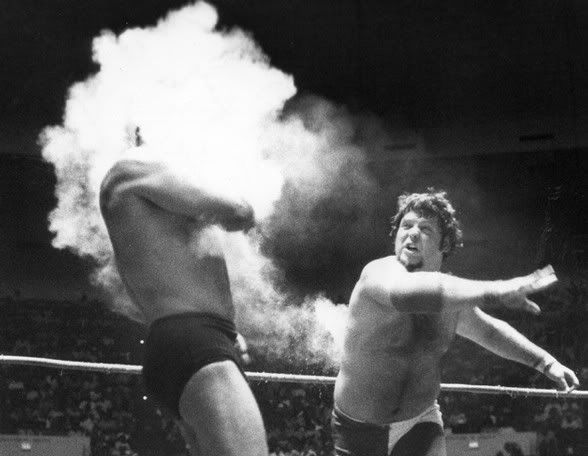
But through Lawler’s promotion on the radio and initial work in the ring, Fargo went to Gulas and earned him a spot at the next show in Jonesboro, Arkansas. It would not take long from those initial shows competing as a jobber before Lawler would quickly move up through the ranks to become a popular character in the Memphis territory.
…
The seeds for the Fargo-Lawler feud were planted when Lawler and partner Jim White won the NWA Southern Tag Titles from Fargo in a handicap match in 1973. By 1974, Lawler had won the NWA Southern Junior Heavyweight Championship from Tommy Gilbert, and promoter Jarrett primed the fans for an extraordinary feud for the summer of 1974 where longtime fan favorite and “King of Memphis Wrestling” Jackie Fargo would challenge Jerry Lawler for not only that coveted title but in a battle of a proven veteran against and a loud mouth up and comer.
Fargo and Lawler would have many battles for the title, trading reigns three times before their final epic battle on July 27, 1974. Not only was the title on the line, with Fargo at that point being champion, but also was the unofficial title of “King of Memphis Wrestling.” It would be a final, end all-be all affair that would in the end cement the legacy of both men.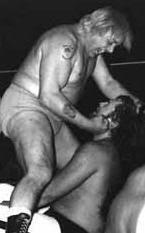
Over 11,000 fans at the Mid South Coliseum, a sell out for that venue, witnessed the ultimate changing of the guard as Lawler defeated Fargo for the newly renamed NWA Southern Heavyweight Title, and as he walked back up the aisle, fans were yelling that Lawler was the king.
And with a chance meeting with Bobby Shane at a show in Atlanta, Lawler assembled his trademark entrance robe and crown.
Jerry “The King” Lawler was born.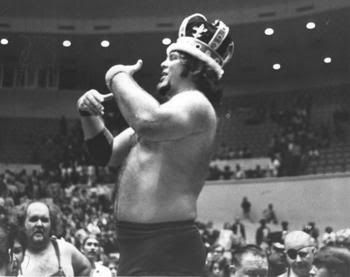
Where Lawler would rise to incredible heights not only regionally but nationally in his popularity, Fargo would also continue to be a successful mentor in the wrestling business, most notably in the early 80’s when Jarrett and Lawler (co-owners of CWA in Memphis) brought him in to manage Stan Lane and Steve Keirn who were tagged up as “The Fabulous Ones.” With Fargo mentoring the two up and comers, “The Fabulous Ones” became instantly popular in the territory as a revival of the Fargo brothers from their run during the 50’s and 60’s. By 1984, though, Fargo moved on from CWA, and the Jim Cornette emerged as the team’s manger.
Earlier this year, Fargo was hospitalized with pneumonia and rumors of his death began to circulate. But those were found to be untrue, and no further developments have emerged concerning his health.
Ultimately, the legacy of Jackie Fargo carries the most resonance in the territory era of professional wrestling, but in so many ways, the persona he embodied; the flowing blonde hair, the trademark strut, the rapport with the audience whether face or heel, became a starting point for so many wanting to break into the the business. But the overall mark of a legend is being able to pass the torch to the next generation. Fargo’s feud with Lawler got the young champion way over with the fans in Memphis and set him on the course to becoming the superstar he would become.
“Meaner than a rattlesnake and tougher than a $2 steak.”

Of course this is also a plug for Memphis Heat as well, which is an amazing watch for wrestling fans. No doubt about it, it is one of the most compelling stories of how a region embraced wrestling whole heartedly and became a breeding ground for the next stars in the business.
One of the extras on the DVD has a section of the interview with Fargo that was left out of the feature, where he tells the story of going to the hospital to visit a child stricken with terminal cancer. Well before the days of Make A Wish, Fargo was asked to visit the young boy because he was his favorite wrestler. The hospital offered to have media on hand if Fargo wanted to have coverage of the event, but Fargo declined.
He gets emotional as he describes meeting the boy and how his face lit up when he saw the superstar in his room. The original diagnosis was for him to only live four or maybe five weeks, but Fargo continued to visit the young man, and remarkably he survived for a year despite his condition.
Fargo not only confesses his admiration for the boy being able to survive as long as he did, but he also states that despite all of the fanfare and the money and the glory, that time he spent with that young man was the best memory he has of the wrestling business.
Often imitated, never duplicated.







